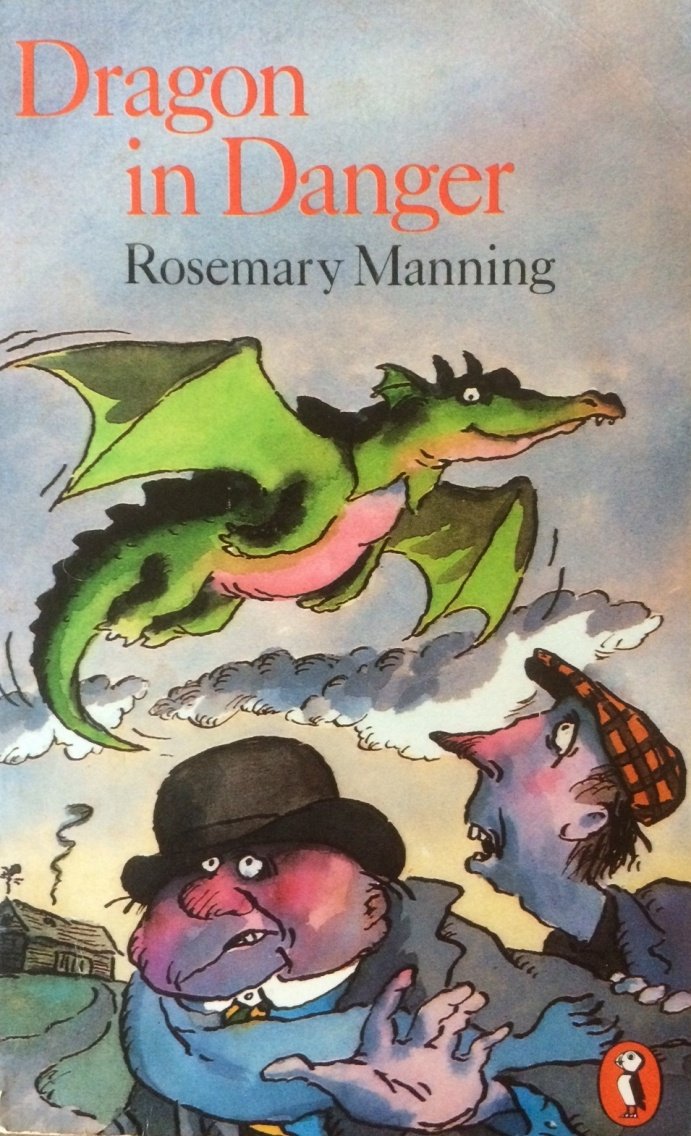Dragon in Danger: a pageant in children’s literature (part 1)
Pageants featured in twentieth-century fiction, as we’ve pointed out before. The best known example is probably Virginia Woolf’s novel Between the Acts (1941), which was set around a village pageant. I have blogged before about V. L. Whitechurch’s Murder at the Pageant (1930). It was not unusual for readers in mid-century to encounter pageants.
Until recently I hadn’t heard of Rosemary Manning and her Dragon series for children, which began in 1957 with Green Smoke. These stories feature a dragon called ‘R. Dragon’ (I can’t yet reveal what the R. stands for). A colleague drew my attention to Dragon in Danger (1959), because its plot centres on a pageant. It’s worth noting that a children’s book from the late 1950s could still feature a historical pageant. Indeed, this might be the most widely read fictional account of a pageant: first published by Constable in 1959, the book was subsequently published by Puffin in 1971 and reprinted ten times by 1986.
Of course, I ordered Dragon in Danger immediately, and have now read half of it. A second interest that it has for me is that it is set in ‘St Aubyns’, near London, which is fairly obviously St Albans: there are Roman remains and a cathedral, the young heroine lives on ‘Fishpond Street’ (Fishpool Street in the real St Albans), and the dragon – of whom more in a moment – lives in an island in the middle of St Aubyns’s lake.

Above: My copy of Dragon in Danger by Rosemary Manning. The cover features R. Dragon and the two baddies of the novel.
Dragon in Danger tells of a young girl, Sue, who meets R. Dragon on holiday in Cornwall and takes him back to St Aubyns, where she lives. The book is a sequel to Green Smoke, in which Sue first encounters the dragon, who is several hundred years old and remembers King Arthur’s time. Arriving in St Albans, the dragon goes to live on an island in the lake.
As it happens, St Aubyns is shortly to have its pageant, and there is a problem: it turns out that an unreliable policeman has forgotten to order the dragon costume, which has now been loaned out to another pageant. It is needed for the scene where St Aubyn fights the dragon (here is where the similarities with St Albans end!). The mayor and other dignatories encounter the dragon walking around St Aubyns, and he somewhat reluctantly agrees to act the part of the dragon in the pageant, in return for being provided with food to eat on his island.
Meanwhile, news of the dragon’s arrival has excited the interest of the novels’ baddies, Mr Bogg and Mr Snarkins, who resolve to kidnap the dragon. I will tell readers what happens in my next blog.

Above: Dragon in the 1953 St Albans pageant: still from the film of the pageant shown by Peter Swinson at the pageants study day, 6 June 2015.
TO BE CONTINUED...
Mark Freeman
